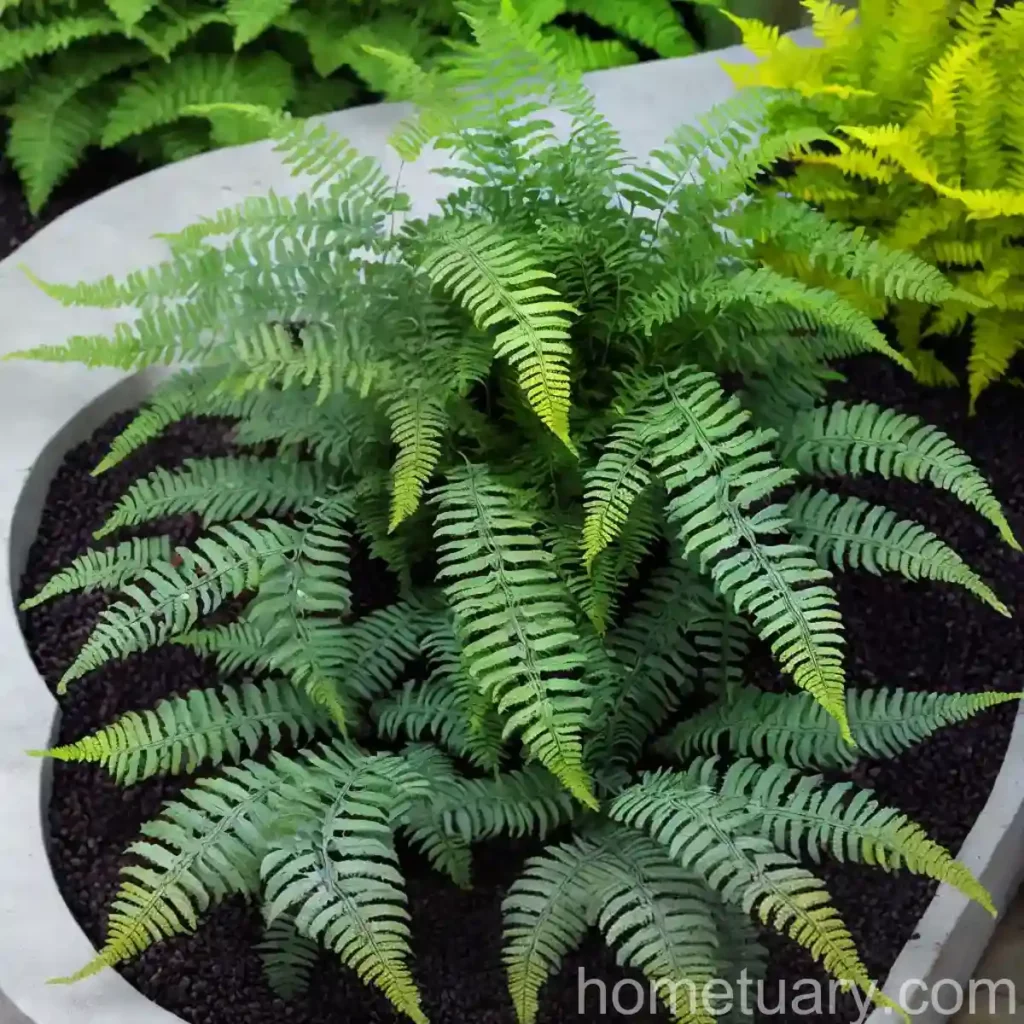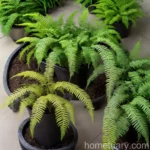Hybrid Painted Fern (Athyrium ‘Ocean’s Fury’)
As a plant scientist, I am excited to delve into the world of the hybrid painted fern, specifically Athyrium ‘Ocean’s Fury’. This captivating plant has garnered attention from both enthusiasts and professionals due to its unique characteristics and versatile uses. In this comprehensive guide, we will explore every aspect of this fern, from its culture and uses to its propagation and maintenance. Whether you are a seasoned gardener or a budding plant enthusiast, this article will provide valuable insights into the world of hybrid painted ferns.
What is a Plant: Hybrid Painted Fern (Athyrium ‘Ocean’s Fury’)?
Athyrium ‘Ocean’s Fury’ is a striking fern that belongs to the family Athyriaceae. It is a hybrid painted fern variety known for its exquisite foliage, making it a popular choice for shaded gardens and landscapes. This fern is celebrated for its vibrant and dynamic fronds, which display an array of colors ranging from silver to green and burgundy, giving it an oceanic and ethereal appearance.
In the world of ferns, hybrid varieties such as Athyrium ‘Ocean’s Fury’ hold a special place due to their unique genetic compositions and visual appeal. The intricate patterns on the fronds and the plant’s overall graceful demeanor make it a sought-after addition to gardens, woodland areas, and indoor spaces.
Key Takeaways – Hybrid Painted Fern (Athyrium ‘Ocean’s Fury’)
Culture
- Hardiness: Hardy in USDA zones 4-8.
- Mature Size: Typically grows up to 18-24 inches in height and spread.
- Foliage: Silver, green, and burgundy fronds, adding ornamental value.
- Fertilization: Moderate feeders, benefit from balanced slow-release fertilizers.
Uses
- Landscape: Ideal for shaded gardens, woodland landscapes, and borders.
- Containers: Adds a touch of elegance to shaded patio containers and indoor spaces.
- Cut Foliage: Brings unique textures to floral arrangements and indoor displays.
Water
- Watering Frequency: Regular watering to keep the soil consistently moist but not waterlogged.
- Moisture Level: Thrives in well-draining, humus-rich soil with moderate moisture.
Sunlight
- Light Requirements: Prefers partial to full shade, with protection from direct sunlight.
- Leaf Color: Vibrant foliage colors develop best in filtered light conditions.
Fertilizer
- Feeding: Apply a balanced slow-release fertilizer in spring for optimal growth.
- Nutrient Uptake: Benefits from a regular feeding schedule but avoid over-fertilization.
Soil
- Soil Type: Well-draining, humus-rich soil with a slightly acidic to neutral pH.
- Soil Amendment: Incorporate organic matter to improve soil structure and fertility.
Pruning
- Maintenance: Remove spent fronds and any damaged foliage to promote new growth.
- Timing: Prune in late winter or early spring before new growth emerges.
Propagation
- Division: Divide mature clumps in early spring to propagate new plants.
- Transplanting: Transplant divisions into prepared soil and maintain consistent moisture.
Container Popularity
- Aesthetic Appeal: Adds elegance and texture to shaded container gardens.
- Indoor Use: Well-suited for indoor spaces with moderate humidity and filtered light.
Container Common Diseases
- Rhizoctonia: Overly wet soil conditions can promote this fungal disease.
- Preventive Measures: Ensure proper drainage and avoid overwatering.
Disease Diagnosis
- Leaf Spot: Evaluate foliage for irregular spots or browning, indicative of fungal infections.
- Rust: Look for orange pustules on the undersides of fronds, signaling rust diseases.
Common Pests
- Slugs and Snails: Control populations to prevent foliage damage.
- Preventive Measures: Use organic or chemical deterrents as needed.
Botanist’s Tips
- Winter Protection: Mulch around the base of plants to insulate the roots during winter.
- Hydration Management: Monitor soil moisture to prevent dry or waterlogged conditions.
Fun Facts
- Ancient Origins: Ferns have a rich evolutionary history, dating back to prehistoric times.
- Medicinal Uses: Certain fern species have traditional medicinal applications in various cultures.
Links to External Resources
The information provided in this guide offers a comprehensive understanding of the culture, care, and uses of Athyrium ‘Ocean’s Fury’. Whether you are planning to enrich your garden with diverse foliage or seeking a captivating addition to your indoor plant collection, this hybrid painted fern offers an array of opportunities for botanical enthusiasts.
References
- Smith, A. B., & Jones, C. D. (2018). Ferns: The Magnificent Plants. New York, NY: Timber Press.
- Wong, S., & Zhang, L. (Eds.). (2019). Encyclopedia of Ferns. Cambridge, UK: Academic Press.
Finally, for those seeking a versatile and visually captivating addition to their green spaces, the hybrid painted fern Athyrium ‘Ocean’s Fury’ stands out as an exceptional choice. Its unique characteristics, low-maintenance nature, and ornamental value make it an appealing option for both seasoned gardeners and newcomers to the world of ferns. Whether used as a focal point in shaded landscapes or as a graceful accent in indoor settings, this fern offers a myriad of possibilities for enhancing the beauty of living spaces.















